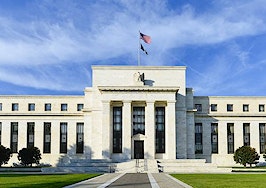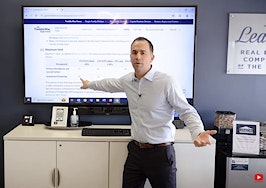The Federal Reserve remains open to tapering its purchases of government bonds and mortgage backed securities later this year, but won’t commit to doing so while the pandemic’s impact on employment remains uncertain, Fed Chairman Jerome Powell said Friday in a much anticipated speech.
Speaking at an economy policy symposium in Jackson Hole, Wyoming, Powell continued to walk the policy tightrope the Fed’s been balancing on all summer. As it prepares to withdraw some of the support it’s provided to the economy during the pandemic, the Fed hopes to avoid panicking bond investors and creating a “taper tantrum” that sends interest rates soaring.
At the Fed’s last meeting in July, “I was of the view, as were most participants, that if the economy evolved broadly as anticipated, it could be appropriate to start reducing the pace of asset purchases this year,” Powell said. “The intervening month has brought more progress in the form of a strong employment report for July, but also the further spread of the Delta variant. We will be carefully assessing incoming data and the evolving risks.”
Powell’s speech — which made clear that if the Fed does taper, it will not necessarily signal an intent to raise short-term interest rates — managed to placate investors in both stocks and bonds.
Stock market indexes tracking publicly traded companies large and small, including the Dow Jones Industrial Average, the S&P 500, and the Nasdaq composite, all posted strong gains on Friday, as investors breathed a sigh of relief that the Fed doesn’t plan to abruptly withdraw its support for the economy until it’s sure the recovery is on the right track.
When investors are bullish on stocks, that often spells trouble for bonds. If investors sell bonds, that pushes yields up. But yields on 10-year Treasury notes — a bellwether for mortgage rates — fell Friday, as investor demand for government debt remained steady.
Powell “stuck to the script in his Jackson Hole speech,” said Pantheon Macroeconomics Chief Economist Ian Shepardson. “Anyone hoping for a steer on the timing of the taper will have been disappointed, but it was never likely.”
While the Fed is keeping a close eye on inflation, it won’t be ready to start tapering until it sees further improvement in the employment situation — and the coronavirus Delta variant poses new risks to the recovery, Shepardson said.
“We still think it’s reasonable to expect the tapering announcement in November, but it could easily be delayed if the post-Delta rebound takes longer than we expect,” Shepardson said.
The Fed’s purchases of government debt and mortgage-backed securities are an emergency measure also employed after the 2007-09 recession. Although the Fed’s “quantitative easing” is supposed to be temporary, the Fed had only started to unwind more than $4 trillion in assets taken on during the Great Recession when the pandemic hit.
Now, with the Fed continuing to add $120 billion a month to its balance sheet every month, those debt holdings are approaching $8 trillion — making it more difficult for the Fed to unwind its position, without unintended consequences.
With many inflation indicators spiking in recent months and home prices soaring, the Fed is under pressure from Republicans and West Virginia Democrat Sen. Joe Manchin to taper, Politico reports.
Not all Fed policymakers share Powell’s conviction that inflation is transitory. Five Fed regional presidents have told CNBC they are ready to scale back the Fed’s asset purchases.
Fed quantitative easing approaching $8 trillion
In more normal times, the Fed’s main monetary policy tool is to make adjustments to the short-term federal funds rate, which is the rate banks charge each other for overnight loans. When the economy is growing too fast and inflation exceeds the Fed’s target, it can raise the federal funds rate, making it more expensive to borrow. When the economy falters, the Fed can lower short-term rates to encourage borrowing and stimulate growth.
The federal funds rate
Once the Fed has lowered the federal funds rate all the way to zero — as it did during the 2008 mortgage meltdown and at the outset of the pandemic in March 2020 — it may turn to quantitative easing as a last resort.
According to the minutes of the Federal Open Market Committee’s July meeting, most members are open to tapering by the end of the year.
“Looking ahead, most participants noted that, provided that the economy were to evolve broadly as they anticipated, they judged that it could be appropriate to start reducing the pace of asset purchases this year,” the minutes said. Several other members indicated that tapering “was more likely to become appropriate early next year.”
At Jackson Hole, Powell made clear that any decision to start tapering will not mean the Fed is ready to start raising short-term rates.
“The timing and pace of the coming reduction in asset purchases will not be intended to carry a direct signal regarding the timing of interest rate liftoff, for which we have articulated a different and substantially more stringent test,” Powell said.
“We have said that we will continue to hold the target range for the federal funds rate at its current level until the economy reaches conditions consistent with maximum employment, and inflation has reached 2 percent and is on track to moderately exceed 2 percent for some time. We have much ground to cover to reach maximum employment, and time will tell whether we have reached 2 percent inflation on a sustainable basis.”












